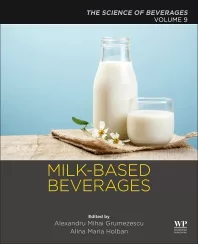Health awareness could offer opportunities for manufacturers
Nielsen study finds consumers willing to pay premium for products with healthy attributes
Health-related concerns could translate into an opportunity for manufacturers, according to a new study by New York-based Nielsen.
Nearly half (49 percent) of the global respondents in Nielsen’s Global Health & Wellness Survey consider themselves overweight. Obesity rates around the world are accelerating and not just in developed countries, the market research firm notes. In fact, 62 percent of the world’s 671 million obese individuals live in developing markets, according to the 2013 Global Burden of Disease Study. The study estimated that 2.1 billion people (nearly 30 percent of the global population)were overweight or obese. Nielsen’s study shows that consumers are attempting to take charge of their health, as 50 percent reported they are actively trying to lose weight and 88 percent are willing to pay more for foods with healthy attributes to some degree.
The obesity crisis and consumer desire to become healthier could be a growth driver for manufacturers who better align their offerings to consumer needs and desires for healthier food.Roughly 75 percent of global respondents believe they “are what they eat,” and nearly 80 percent are actively using foods to forestall health issues and medical conditions, such as obesity, diabetes, high cholesterol and hypertension.
“There is a tremendous opportunity for food manufacturers and retailers to lead a healthy movement by providing the products and services that consumers want and need,” said Susan Dunn, executive vice president of global professional services with Nielsen, in a statement. “While diet fads come and go overtime, innovative, back-to-basics foods that taste good, are easy to prepare and provide healthful benefits will have staying power. The first step is knowing where to put your product development efforts.”
The Nielsen Global Health & Wellness Survey polled 30,000 online respondents in 60 countries to identify how consumers feel about their body image and the steps they’re taking to get healthier.
Dividing global respondents into four buckets of spending intent, the highest percentages are only moderately willing to pay a premium for health claims — an average of 38 percent across 27 attributes included in the study. About one-quarter of global respondents are very willing to pay a premium (27 percent), followed by 23 percent who are slightly willing and 12 percent who are not willing. Although there was not one health attribute that swayed dramatically from these spending intention buckets globally, a few regional differences prevail, Nielsen reports.
A willingness to pay a premium for health benefits is higher in developing markets than elsewhere. More than nine in 10 respondents in Latin America (94 percent), Asia-Pacific (93 percent), and Africa/Middle East (92 percent) say they’re willing to pay more for foods with health attributes to some degree, compared with eight in 10 in Europe (79 percent) and North America (80 percent).
For most attributes, there also is a gap between the percentage of respondents that say a health attribute is very important and the percentage that are very willing to pay a premium. For example, 43 percent of global respondents say the absence of GMOs is very important in the foods they purchase, but only 33 percent are very willing to pay a premium for these products, the report found.
One notable exception is organic foods. Thirty-three percent of respondents say organics are very important, and the same percentage also is very willing to pay a premium for these products, Nielsen reports.
A willingness to pay a premium for health attributes declines with age. Generation Z (consumers younger than 20) and millennials (ages 21-34) are more willing to pay a premium for all attributes, even those that are more important to Generation X (ages 35-49) and baby boomers (ages 50-64). Percentages believing they are very important are lowest among the silent generation (aged 65 and older) for all 27 attributes. Attributes gaining the most favor include products that are GMO free, have no artificial coloring or flavors, and are all natural.
“While age often dictates a need for foods that contain certain health attributes, it is the youngest consumers who are most willing to back up their sentiments with their wallets,” Dunn said. “As millennials’ purchasing power increases, manufacturers and retailers that make the effort to understand and connect with this generation’s needs increase their odds of success.”
The generation gap is particularly pronounced for functional foods that reduce disease risk or promote good health and for socially/environmentally responsible foods. For example, 41 percent of Generation Z and 32 percent of millennial respondents reported being very willing to pay a premium for sustainably sourced ingredients, compared with 21 percent of baby boomer and 16 percent of silent generation respondents, according to the report. Generation Z and millennials also are leaders in the gluten-free movement. Thirsty-seven percent of Generation Z respondents and 31 percent of millennials are very willing to pay a premium for gluten-free products, while only 22 percent of baby boomer and 12 percent of silent generation respondents are willing to do so, Nielsen reports.
Looking for a reprint of this article?
From high-res PDFs to custom plaques, order your copy today!





